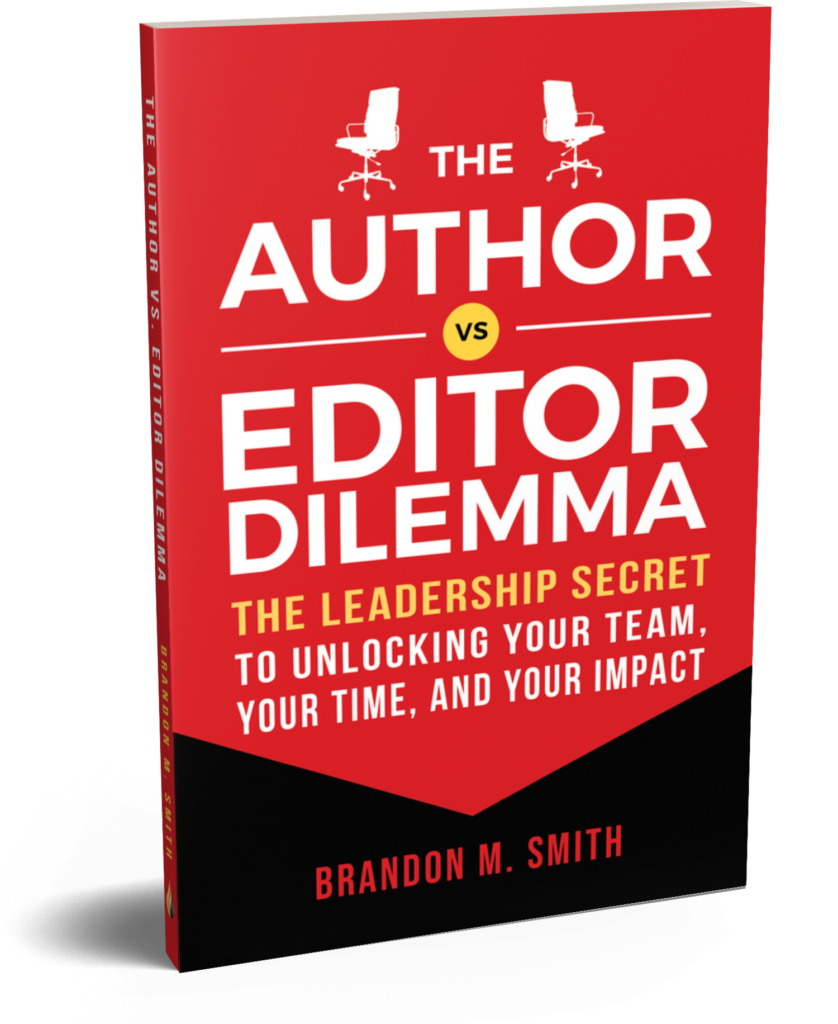
The Author vs. Editor Dilemma: How to become a more effective leader
Posted On July 30, 2024
Have you ever thought of the workplace like an editorial relationship? The authors are coming up with solutions to problems, and the editors are considering the worth of those solutions and recommending ways to make them better.
Our guest in a recent episode of “What’s Working with Cam Marston” has written a book using this analogy to suggest a better method of leadership. Brandon Smith, an executive coach and self-described “workplace therapist,” is the author of “The Author vs. Editor Dilemma,” which has become a trusted go-to guide for many executives and leadership coaches.
“What I find is, when things are urgent all the time, leaders have a tendency to drop down into the weeds,” Smith said. “They spend time in the business when they should be on the business.”
 This can be counterproductive for several reasons. It’s time that would be better spent on strategy and planning. And it keeps those next-level employees who report directly to the leader from developing the skills to operate with some autonomy – which would allow the business to run more smoothly.
This can be counterproductive for several reasons. It’s time that would be better spent on strategy and planning. And it keeps those next-level employees who report directly to the leader from developing the skills to operate with some autonomy – which would allow the business to run more smoothly.
“It’s really important that we want those leaders sitting in the editor’s seat with their teams – their direct reports — 80 percent of the time and the author’s seat only 20,” Smith said. “It’s more of a complex executive-level way of thinking – bring me solutions, not problems.
“Leaders pat themselves on the back and say, ‘I’m a humble leader. I’m a servant leader. I rolled up my sleeves and I got my hands dirty.’ And that’s good; we like that. But when you do it all the time, what you’re really doing is falling into one of the traps that I write about in the book – the hero trap. You’re throwing on your hero cape and you’re swooping in and saving the day every day. But when you do that regularly, you’re now creating a co-dependent relationship. Our direct reports never learn how to solve those problems. All they learn is to pick up the phone and call you. So it’s all on your shoulders.”
One fan of Smith’s approach is Wills Moore of Agilitas Human Resources Consulting, who regularly works with small businesses going through growth and transformation. “This has been a great tool to help them look in the mirror at their own leadership style,” Moore said. “What do they need to be doing differently as their business changes? How do they need to raise their game?”
It’s a transition for leaders to start working this way, Smith admitted, and regular one-on-one meetings with those direct-report employees is important to making it work. Leaders need to require those employees to have something to share during these meetings, he said, even if it’s only a status update.
These meetings, and this method, is designed push direct-report employees to:
- Take ownership
- Show initiative
- Display critical thinking
“The point of these conversations is to elevate the critical thinking of our direct reports,” Smith said. “With each one of these conversations, we move the needle a little further on their critical thinking, with the goal of them ultimately thinking just like we would to solve a problem so we don’t have to.”
What about that 20 percent of author time for the leader? That, Smith said, should be spent on things only the leader can author, and he should make time to talk about them with employees on a weekly basis:
- Strategy/priorities
- Culture
The Author vs. Editor analogy can also be used effectively in parenting, Smith added. It’s all about making your kids take some responsibility and contribute to the household. “If the goal is to get your kiddos to be fully functioning adults ready to take on the world — pay their own bills, be a positive contribution to society, not living in your basement – the parents will get there quicker if they shift from the author seat to the editor seat sooner,” he said.